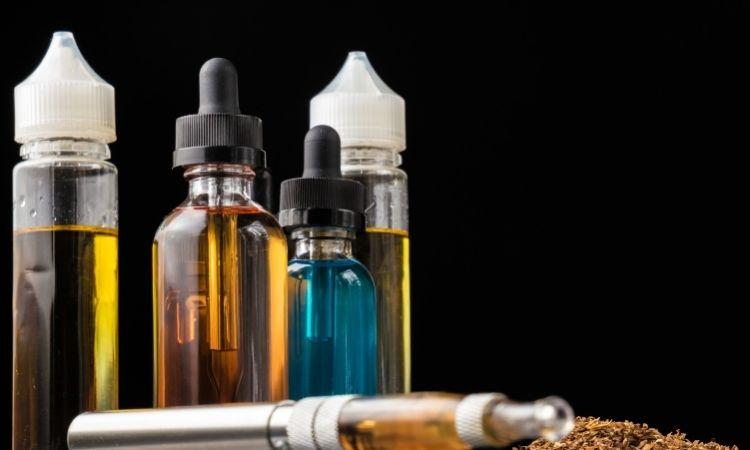The global E-liquid market size has been experiencing rapid growth in recent years, driven by the increasing popularity of vaping products as an alternative to traditional tobacco smoking. According to industry reports, the market size reached approximately USD 2.01 billion in 2023 and is projected to grow at a CAGR of 12.2% between 2024 and 2032, reaching a value of around USD 5.68 billion by 2032. This growth trajectory is indicative of the rising demand for e-liquid products worldwide.
However, this growth has also attracted regulatory attention, with governments and regulatory bodies around the world implementing regulations to govern the production, sale, and marketing of e-liquids. These regulations aim to ensure product safety, protect consumer health, and prevent youth access to vaping products. In this blog post, we will explore the impact of these regulations on the e-liquid market, focusing on their effects on manufacturers, consumers, and innovation within the industry.
Overview of E-Liquid Regulations
E-liquid regulations vary widely across different regions and jurisdictions, reflecting the diverse approaches taken by governments to regulate vaping products. In the United States, the FDA regulates e-liquids as tobacco products under the Family Smoking Prevention and Tobacco Control Act. The FDA's regulations cover various aspects of e-liquids, including manufacturing standards, ingredient disclosure, and health warnings on packaging.
Similarly, the European Union has implemented the Tobacco Products Directive (TPD), which sets out regulations for e-liquids sold in EU member states. The TPD includes provisions related to product safety, labeling, and packaging requirements, as well as restrictions on advertising and sponsorship of e-liquid products.
Current Regulatory Landscape
The regulatory landscape for e-liquids is constantly evolving, with new regulations being introduced and existing ones being updated regularly. For example, in the United States, the FDA recently announced plans to ban the sale of flavored e-liquids, except for tobacco and menthol flavors, in an effort to curb youth vaping rates. This move is expected to have a significant impact on e-liquid manufacturers, many of whom rely on flavored e-liquids for a large portion of their sales.
Similarly, in the European Union, the TPD has been subject to several updates since its introduction, with new regulations being introduced to address emerging issues such as cross-border sales of e-liquids and the use of novel nicotine delivery systems. These changes have forced e-liquid manufacturers to adapt their products and practices to comply with the new regulations, leading to increased costs and complexity for businesses operating in the EU market.
Impact on E-Liquid Manufacturers
The impact of e-liquid regulations on manufacturers has been profound, with many companies facing significant challenges in complying with the new rules. For example, the introduction of stricter manufacturing standards has required manufacturers to invest in new equipment and processes to ensure product safety and quality. Similarly, the need to disclose ingredients and provide health warnings on packaging has added to the regulatory burden faced by manufacturers, leading to increased costs and administrative complexity.
In addition, the ban on flavored e-liquids in some jurisdictions has forced manufacturers to reformulate their products or diversify their product offerings to comply with the new regulations. This has required companies to invest in research and development to develop new flavors that meet regulatory requirements while maintaining consumer appeal.
Impact on E-Liquid Consumers
The impact of e-liquid regulations on consumers has also been significant, with many experiencing changes in product availability, pricing, and variety as a result of the new regulations. For example, the ban on flavored e-liquids has limited consumer choice, with many popular flavors being discontinued or reformulated to comply with the new rules. Similarly, the introduction of stricter labeling and packaging requirements has led to changes in product packaging and presentation, which may impact consumer perception and purchasing decisions.
Additionally, the increased costs associated with regulatory compliance have led to higher prices for e-liquid products, making them less affordable for some consumers. This has raised concerns about the potential impact of regulations on access to vaping products for adult smokers looking to quit smoking.
Impact on E-Liquid Innovation
Despite the challenges posed by regulations, they have also driven innovation within the e-liquid market, as manufacturers seek to develop new products and formulations that comply with the new rules. For example, the ban on certain ingredients has led to the development of new nicotine salts and other novel nicotine delivery systems that are designed to deliver nicotine more efficiently and effectively than traditional e-liquids.
Similarly, the introduction of stricter packaging and labeling requirements has led to innovations in packaging design and technology, with manufacturers developing new packaging solutions that meet regulatory requirements while maintaining product appeal and functionality. These innovations have helped to differentiate products in a crowded market and have driven growth and competitiveness within the industry.
Future Outlook
Looking ahead, the e-liquid market is likely to continue to face regulatory challenges, as governments and regulatory bodies seek to address emerging issues and concerns related to vaping products. Future regulatory trends may focus on areas such as product safety, ingredient disclosure, and marketing practices, with the aim of further protecting consumer health and preventing youth access to vaping products.
Despite these challenges, the e-liquid market is expected to continue to grow, driven by the increasing popularity of vaping products and the growing demand for alternatives to traditional tobacco smoking. By adapting to regulatory changes and embracing innovation, e-liquid manufacturers can navigate the regulatory maze and continue to thrive in a regulated market.

